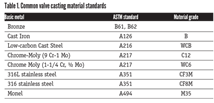Saunders® I-VUE Smart Valve Sensor from CRANE ChemPharma Flow Solutions
CRANE ChemPharma Flow Solutions is pleased to announce the launch of its new Saunders® I-VUE Smart Valve Sensor.
#controls #iiot #automation
The Saunders I-VUE is designed specifically for aseptic diaphragm valve applications in the Life Science industry. Compatible with Point-to-Point (P2P), AS-i and DeviceNet control systems, the Saunders I-VUE offers substantial benefits over standard switch controls including:
- Enhanced reliability and accuracy with solid state continuous sensing technology that provides precise position readings for the entire valve range from 0.25″ to 4.00″ (DN8 to DN100).
- Simplified installation by utilizing automated valve calibration without opening the IP67 rated polycarbonate sensor enclosure, reducing set up times to 3 minutes or less.
- Lower maintenance costs by applying factory or user defined device settings to monitor valve cycle count and end point tolerance limits, preventing false alarms and unnecessary diaphragm replacement.
For more information about the Saunders I-VUE and intelligent sensing technology visit: www.saundersI-VUE.com.
RELATED CONTENT
-
Direct-Sealing Diaphragm Valves Offer Novel Approach
As modern industries such as hydrogen electrolysis and biotech make dramatic technical advances, engineers and researchers must sometimes turn to nontraditional process control systems.
-
Understanding Torque for Quarter-Turn Valves
Valve manufacturers publish torques for their products so that actuation and mounting hardware can be properly selected.
-
Editor's Product Picks
Neles introduces valve-sizing and selection software for all intelligent automated process valves.










 Unloading large gate valve.jpg;maxWidth=214)